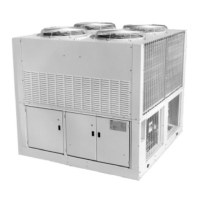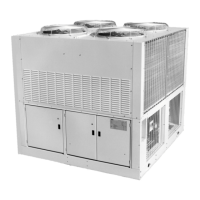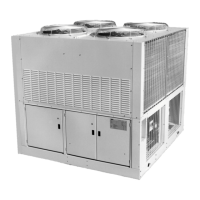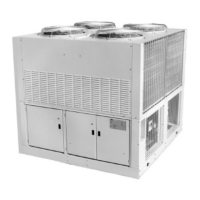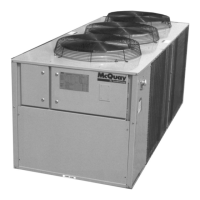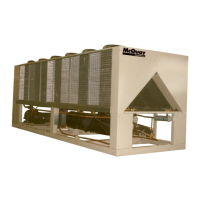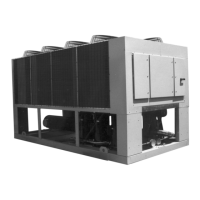IOMM AGR AGR 055A through 100A 91
Figure 37, Hex Switches
1
2
3
0
4
5
6
7
8
9
A
B
C
D
E
F
1
2
3
0
4
5
6
7
8
9
A
B
C
D
E
F
HI (left) hex switch LO (right) hex switch
* Hex switch setting 01 shown
Communication Ports
The MCB has two communication ports: port A and port B. Each port has six terminals and is set
up for both the RS-232C and RS-485 data transmission interface standards. The male and female
connectors for these ports are manufactured by AMP. Therefore, they are referred to as “AMP
plugs” or “AMP connectors” throughout this manual. Socket fuses located next to the ports protect
the communications drivers from voltage in excess of ±12 Vdc. Following are brief descriptions of
each port’s function.
Port A: Port A is for communications with an IBM compatible PC using the RS-232C interface
standard. The PC can be directly connected, over a limited distance, with a twisted, shielded pair
cable, or it can be remotely connected via phone lines with a modem. Port A can also be used to
connect a licensed building automation system to the MicroTech network via Open Protocol. The
default communications rate is 9600 baud.
Port B: Port B is for MicroTech network communications using the RS-485 interface standard.
A twisted, shielded pair cable should be connected to port B via terminals B+, B–, and GND on
terminal block T11. The communications rate is 9600 baud.
Output Board
The Output Board (OB) accepts up to 16 digital outputs from the MCB. Each output has fused
sockets and can be used to switch AC or DC power by selecting a particular relay output module.
Screw terminals allow for field wiring connections to the output device. Each output has an onboard
LED that illuminates when an output socket that contains a relay is activated by the MCB.
Following are the Output Board’s power ratings:
• 120V ~ 50/60 Hz
• 250V ~ 50/60 Hz
Power
Above each edge card connector are field wiring terminals for 5 Vdc (regulated) and 24 Vac (ground
referenced). These terminals can be used to power peripheral devices. The 5 Vdc is also used to
power the LEDs in the Output Board.

